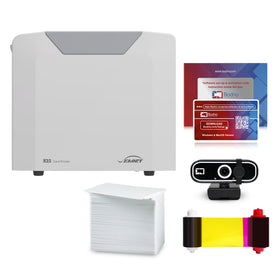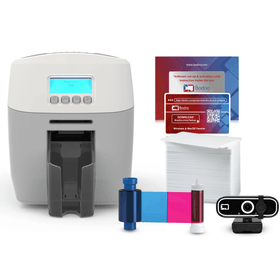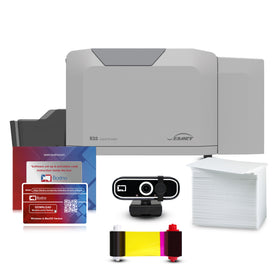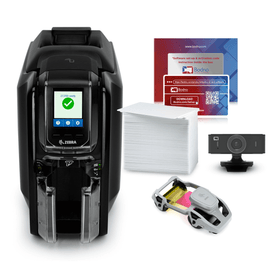It is often easy to overlook the importance of getting the right IDP printer to match your office security needs. One specific printer that manages to match almost all kind of requirements is the Fargo DTC 4500e. A popular direct-to-card printer model in most offices, the DTC 4500e is a piece of equipment you can buy and trust over the long haul.
Notable Features
- Long-Lasting Build: This printer allows a level of flexibility around which companies can get used to it at their own pace. If there is expansion around the corner, or if security requirements vary with time, this printer can continue to perform well.
- Scalability: It is possible to “chain” together ID card printers of this model, and have them all run at the same time in different locations. It does not need to be explained how much this could boost productivity in the day-to-day. It is also possible to align the output and input hoppers onto the same side, which is perfect for when you have very little space on your desk.
- Overall Performance: This printer gives remarkably quiet operation, alongside a display panel that puts forth crisp messages to tell you at a glance what is happening. The ribbon capacity is higher as well; this means a much lower cost on each card, which in turn means a rise in efficiency and cost savings.
- Good Warranty Coverage: The company generally gives a 3-year replacement coverage on both printer and print heads, as well as a year of loaner coverage to make sure you are not left without a printer if things ever go south.
- Security: The DTC 4500e has input hoppers that can be locked in place, allowing prevention of theft, counterfeiting, and forgery. The dual 100-card hoppers allow for better printing flexibility, so that visitor cards and security cards can be fed in separately.
Recommended Upgrades
The DTC 4500e provides a decent number of upgrade options, which if purchased can significantly step up the effectiveness of your card issuance operations, and pace it according to the growth of your business. These upgrades are mostly field-installable, which means there is never a need to send the printer to a manufacturer or technician. Following are a number of upgrades you could consider installing after a year or two of use.
- Adding dual-side or single-side lamination to stretch the life of the card, as well as to raise security in the form of holographic images. You can even stack the laminator, which means less horizontal space gets taken up.
- Dual-sided printing, which allows for more flexibility, such as bringing the option to add emergency step, mission statements, instruction for the event that the card is lost, etc.
- Adding encoding modules which allow for proximity, magnetic stripe, and contact/contactless technology cards such as MIFARE, iClass, and DESFire. This essentially widens the scope of the printer’s control and applications.
- Upgrading to Wi-Fi, or adding this functionality right when you buy the printer, to boost convenience of operation.
How it Stacks Up against the Fargo DTC 4000
Both machines are known for being robust and dependable, and a lot of the time, people are confused as to how the newer model is different from its predecessor. Some key similarities you would be interested in as a buyer include the below.
- Both models were made to be a lot faster in terms of print speed, at 24 seconds on a YMCKO, full-color, single-sided card
- Both machines are light, and take up very little space compared to older models.
- The ribbons for each printer come pre-spooled, which means there is no longer a need to fuss around with the ribbons just to get them inside the machine. All you need to do is take out the old cartridge, and put in the new one.
- Upgradeability to duplex printing, as well as magnetic stripe encoding, is a common feature between the two models. Field installable parts make this an easy job, which requires no technician’s assistance.
The following are some differences you would probably notice in the newer model.
- The DTC 4500e comes pre-configured for Ethernet-readiness. The same would cost $299 on the DTC 4000 as an optional upgrade.
- The dual input hoppers easily set the newer Fargo printer apart; this is a standard, while on the DTC 4000, it is an optional upgrade costing $600.
- The newer printer lets you add a lamination upgrade, but this is not an option with the older printer.
- The DTC 4500e yields 500 prints for each roll on a standard YMCKO ribbon. With the same setup, a DTC 4000 puts out just half that (250 prints on a ribbon); in short, the older model has you spending a lot more time on maintenance than printing.













 Software
Software Upgrades
Upgrades Support Plans
Support Plans Self Serve
Self Serve Printer Setup
Printer Setup


